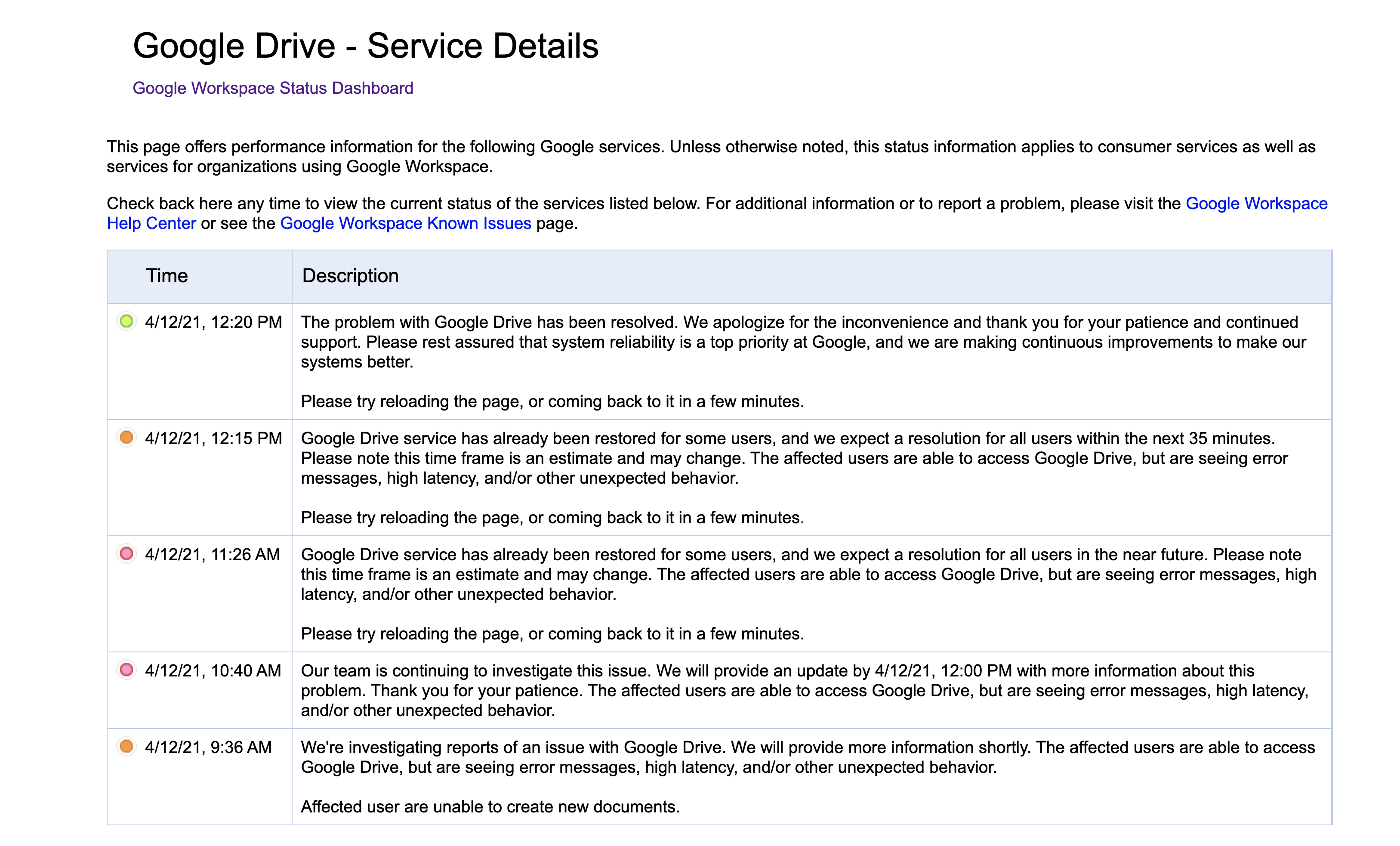You have /5 articles left.
Sign up for a free account or log in.
On the morning of April 12, Google Drive went down.
I first encountered the Google Drive problem around 10 a.m., when I tried to convert a PowerPoint file to Slide format. The conversion wasn’t working. The .pptx file would upload, but it would not save as a Google Slide.
The problem is that I needed to send the slide around to collaborators. The deck is time sensitive. We need to work on it together for an upcoming presentation. The team needs to collaboratively write, edit and iterate the deck.
Initially, I thought that there was something wrong with my PowerPoint. Setting that project aside for a moment, I tried to start a new Google Doc to collaborate on a project with a colleague. Nothing doing. Google Drive was down for the creation of new documents.
It was only at that point that I googled “Google Drive Down” -- and got a bunch of news stories confirming that the service was not working.
Checking out Google’s Workspace Status Dashboard, I confirmed that things were indeed broken.
As I write these words, everything with Google is now fine. We are all back to writing and collaborating on Google Drive.
The Google Drive outage the morning of April 12 has forced me to think about my dependence on Google Docs, Slides and Sheets -- and to wonder about the extent to which all of academia depends on these tools.
If there is any digital product/service/platform from a single company that I rely on most, it is Google Drive.
If Zoom went down, I’d be inconvenienced. (Actually, maybe I'd first be relieved for a break from Zoom -- but also inconvenienced.) We’d switch to something else. Teams. Google Meet.
If Google Drive is not working, then the very heart of what I do as an academic -- write collaboratively -- is dead in the water.
Google Docs is the platform that my co-author Eddie Maloney and I use to work on our articles and book projects.
At the college where I work, the platform that my closest colleagues use for co-creating working documents is Google Drive.
The agendas for all of our meetings, both past and upcoming, are in Google Docs.
The presentations that we create together, an activity at the heart of what we do at the intersection of learning and technology, are in Google Slides.
From what I understand, the online real-time collaboration tools in MS Office have significantly improved. I know some people in higher ed who swear by the affordances of the mixed web-based and client application MS Office suite.
Still, if your academic life is anything like mine, Google Drive is at the center. Switching to online Office may be possible, but the sense is that the instantiation of the online Office applications were not created with lightweight collaboration primarily in mind. Office may have more features and abilities, but the platform is suboptimal for ongoing collaborative work -- and can be a challenge to utilize with colleagues at different institutions.
Do you share that perception of the difference between Google and MS authoring and collaboration tools?
With Google Drive going down -- even for a few hours -- it is good to ask ourselves if we in higher ed have become too dependent on this platform.
In my work, there is no way to fail gracefully if Google Docs, Sheets and Slides are not fully operational.
Google Drive has been so reliable that it is somewhat of a shock when it stops working. You expect it to be up and working. And that assumption is a mistake.
Should higher ed be developing a plan B for Google Drive?
How was your work impacted on the morning of April 12 when Google Drive went down?





